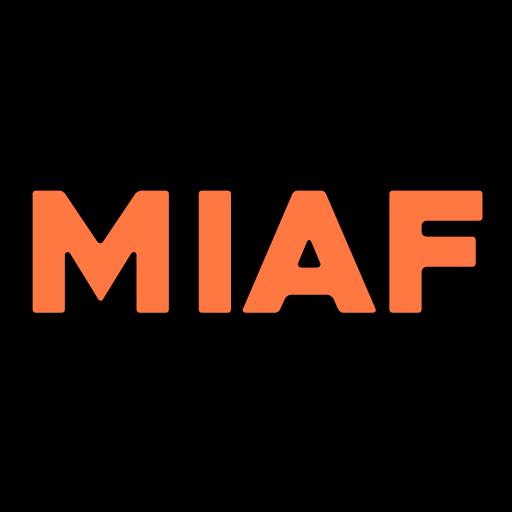
“All Nature is but art, unknown to thee, all chance, direction, which thou canst not see; discord harmony not understood, all partial evil universal good.”
Alexander Pope: An Essay On Man (1734)
“Who cares to know the history of man, and how the mysterious mixture heaves under the varying experiments of Time.”
George Eliot: Middlemarch (1874)
You don’t get into animation unless you are searching for answers to the strangest questions. Or just strange answers to the usual questions. Take your pick… if you’re that lucky!
Alexander Pope was trying to hold the line as the age of Enlightenment got up to speed. Anything we couldn’t put our finger on had to be more or less left to the province of God to explain is a kind of shorthand translation. Rising Modernist philosophers and assorted oracles of the likes of David Hume and Adam Smith were looking to cut that idea off at the knees. People like Hume and Smith felt certain that humans had way more capacity to go search for, understand and describe the world they lived in, and the ‘new’ philosophers were determined to unleash the power of the person on the world for its own sake and for that of its inhabitants. Hume’s gut feeling that “all human knowledge derives solely from experience” feels like a bit of a bridge too far but, to be fair, his ideas were up against some pretty stiff, holy competition. Adam Smith believed humans have every right (and need) to claim much more command over the domain of life. How these two managed to survive is one of history’s enduring little mysteries but good on them for giving it a go.
The concept is now fairly universal, bordering on the common sense really – it is nowadays more the breadth and depth of the horizons you think it opens for you that is the main division among most people rather than the philosophical position itself. The good news is that we can kill as much time as we want waiting for the apocalypse whilst searching for these sorts of answers and, ultimately, we’ll probably never get there but it’s part of the human mission to search and that’s really the main thing. So, yeah, we can run and we’re going to die tired.
This unleashed the power of artists as we understand it today. Yay for the Enlightenment eh. Seekers not so much of definitive truths per se but more of the ever-broadening pathways to continue seeking truths. Indeed, deep suspicion does – and should – fall upon most sayers turning up with a new truth to share. For the sake of expediency, let’s just put a quid or two in their cup, wish them well and send them on their way.
Once the idea that you could cook up your theory on how all this works, there was no holding back humanity. While this was a bit of a mixed blessing for everyone and everything in the loop, it’s been an interesting ride ever since. This capacity to source, develop and communicate a theory of why we are like we are or how we got here doubled every time a new relevant technology turned up. Again, this was not always great news but we live in a world that needs babies and bathwater. And baths.
Increasingly the arts fractured into a zillion different ways of pursuing questions big and small. Art movements emerged, prospered, commanded the high ground and faded – or were discarded. Anybody feel like revisiting Arte Povera, Viennese Actionism or Incoherentism? Me neither.
Arguably even more influentially, social and political movements rose and scrambled about for their moment in the sun. And some of those somehow felt like they shared some kind of common single-cell ancestor with people whose minds turn to the arts as a vehicle to search for the answers they want to explore or explain.
Truly amazing examples abound. Picking one……. Kandinsky and anarchy. Vasily Kandinsky is, by any measure, one of the most important artists of all time, certainly the 20th century. And yet he drifted towards art after having explored his initial fascinations in areas such as anthropology, economics, ethnography and law. An early encounter with Monet’s ‘Haystacks’ (Les meules, 1891) was especially critical to his desire to harness art as a source-code of inquiry.
“Objects were discredited as an essential element of the picture,” Kandinsky observed, and with some excitement.

It was a penny drop moment. “Many call the present state of painting ‘anarchy’…[which] is thought, incorrectly, to mean unplanned upheaval and disorder. But anarchy is regularity and order created not by an external and ultimately powerless force, but by the feeling for good…giving rise to an ever-increasing freedom that, in turn, opens the way for subsequent revelations.”
In ‘Kandinsky And Radical Ecology: States Of Mind, States Of Abstraction’, the opening chapter in the Guggenheim published Kandinsky catalogue ‘Around The Circle’, co-authors Mark Antliff and Patricia Leighton tease out this idea and the connection between this socio-political concept and Kandinsky’s approach to contemplating art-making. After trying to partially sand back the more abrasive edges of the contemporary, purely politically-infused meaning of ‘anarchy’ they paint their own picture of how Kandinsky (and many of his ilk) fused a sense of the word into their approach to their work and made something new in the process.

This is no more than a look-through-a-keyhole at how artists can bend something from the ‘outside’ world and without irony (usually) or even the need to explain how they use it to present work that makes the most sense to them. That’s usually our job – and good luck to us! Animators get to push, bend and morph the ‘playdough’ of their art more than most. As the saying goes, in animation if you can imagine it you can present it. And in a programme titled “From Absurd To Zany” you have films and filmmakers that are pushing harder than the average.

The programme opens by kicking the jams out from under any notion of ‘representational’ meaning. Gina Kamentsky’s Pinocchio In 70mm is made by, well, Gina Kamentsky and is made on, ummm, 70mm film stock. It has to be a glorious filmstock to work on, 70mm. Literally twice the size of regular cinema (35mm) filmstock this stuff gives the filmmaker a bigger canvas to create on. Kamentsky responded to that ‘gift’ (or opportunity) by gluing other images to the film, rubbing old-school Letraset lettering on to it, bleaching away the backgrounds and making judicious use of the Soviet era propaganda ‘found’ footage that underpins the flow of the film. Meaning? Be my guest. No literal meaning (presumably) but like a dream contemplated long enough it gets less and less random the more it is contemplated.
British animator Stephen Irwin has some of the best truth-twisting instincts of any animator we know…. maybe “meaning-twisting” instincts would be a better way to put it. He might have even gotten on with Kandinsky. His new film A Round Of Applause For Death, for example, wastes no time in subverting spoken language to help paint a kind of wordy ‘visualish’ vista against which an uncertain narrative is rolled out in a way that seems deliberately (or without regard) designed to impose a ‘new normal’ on the strange world the film swims in. Irwin’s films could be the production love children of William Burroughs and Franz Kafka. His characters and narratives live in what could best be described as worlds of vivid shadows and to take the ride you have to abandon routine assumptions at the door otherwise you are only going to get dragged through his films like you were hanging on to a piece of rope behind a galloping horse….. and you surely don’t want that!!
American animator Sean Buckelew is not one to settle on ‘a style’. We have screened a number of his films over the years and the styles and subjects of those films have varied widely. His latest film I Am A Robot simply carries on that tradition. Buckelew’s film offers a more forward looking vision than most in this particular programme and whether its premise will prove absurd or zany only time will tell. The role ‘smart’ machines will pay in our lives is still largely unlitigated. And It’s entirely likely we will have little to no say as they increasingly adopt and impose personas manufactured by designers with priorities rammed home by algorithms that develop beyond the v1 version initially installed. The point – maybe and increasingly – is, who cares? It’s a good question for artists to pursue…they might wind up being the only ones capable of tackling it.

Any day a new film by Koji Yamamura turns up here at LIAF is a red-letter day. This is an animator who has shaped the meaning of auteur/independent animation in our age. No two of his films are the same but there tends to be a central fascination; a point of tight, tight narrative focus that has been burnished down and down to its core until it is no larger – but no less powerful – than a central driving nucleus. Extremely Short is no exception. It is a film that is part of a larger collaborative ‘integration’ seeking to co-join the core forces of animation and Japanese literature and the almost incomprehensible way in which we process mere words through the infinitely complex wiring of our minds. A single thought, a tiny word, a lone and distinct memory…. any and all of these (and more) can enter our mind and in the speed of light combine with everything else that was ever put in there producing a meaning, reinterpretation or even a point of solace that could take hours to explain. It is both an almost infinitely complex and elementally simple idea and it’s the kind of thing that Koji Yamamura tackles with aplomb.
Malcolm Turner
International Competition 3: From Absurd to Zany screens at The Garden Cinema Sun 24 Nov and online from the same date (available for 48 hours)

















Leave a Reply